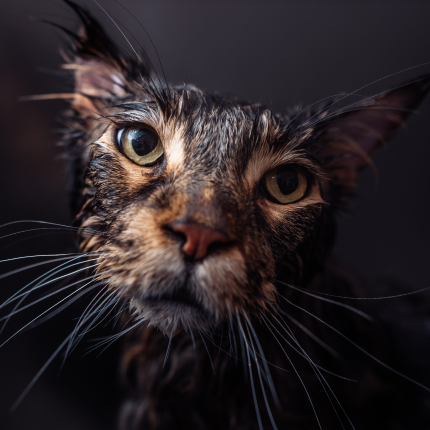Cat Disaster Preparedness

In times of emergency, pets become even more reliant on their owners for safety and well-being. Just as families create disaster plans for themselves, it’s essential to ensure that those plans include all family members. Learning how to prepare for emergencies involving your feline companions and help them recover afterward is important.
Assemble an Emergency Kit for Your Cat
An emergency kit ensures your cat’s needs are met during a disaster. Keep your supplies in an easily accessible location, using sturdy containers for transport.
Your emergency kit should include:
- Leashes (if your cat is leash trained), Harnesses, and Carriers: These will help you transport your cat safely and prevent them from escaping during evacuation.
- Food and Water: Pack enough food, drinking water, and bowls for both. If your cat eats canned food, include a manual can opener.
- Litter and Litter Box: Have cat litter and a portable litter pan for your cat’s bathroom needs.
- Medications and Medical Records: Store any necessary medications and copies of your cat’s medical records in a waterproof container.
- First Aid Kit: Include supplies designed explicitly for cat care.
- Current Photos: Keep recent photos of you with your cat in case they get lost. This can help eliminate confusion if someone else finds them.
- Important Information: Document your cat’s feeding schedule, medical conditions, behavioral issues, and your veterinarian’s contact information if your cat needs to be boarded or fostered.
- Comfort Items: If space allows, include a portable cat bed and toys to help comfort your cat.
Know Where to Take Your Cats
In an evacuation, planning where to take your cats is step one. It isn’t safe for your pets if it’s unsafe to stay behind.
- Research hotels and motels along your evacuation route that accept pets, and call ahead to confirm policies.
- Be aware that many emergency shelters do not accept pets besides service animals.
- Prepare a list of friends, family members, boarding facilities, animal shelters, or veterinarians who can care for your cats during an emergency, including their contact information.
Evacuation Drills
Include your cats in evacuation drills to help them become accustomed to entering and traveling in their carriers calmly. This will reduce anxiety during an actual emergency.
Health and Identification
Ensure your cat’s vaccinations are current and wear collars with securely fastened, up-to-date identification. Many pet shelters require proof of vaccinations to prevent the spread of disease. Consider having your cat microchipped for an added layer of security.
By taking these proactive steps, cat owners can ensure their feline companions remain safe and secure in an emergency. Disaster preparedness protects pets and contributes to a sense of calm and control during uncertain times.

Featured Articles

Polydactyl Cats: Just More Beans to Love
Polydactyl cats have become extremely popular in recent times. As a result, more and more people are interested in learning more about this six-toed cat and want to get one of their own. If you are a cat lover intrigued by polydactyl cats, you have come to the right place….

The Odd-Eyed Cat (AKA Heterochromia)
Cats are already beautiful and fascinating creatures, but people are bound to take notice when they have something as captivating as two different colored eyes. Odd-eyed cats always have one blue eye paired with either a green, yellow, or brown eye. This form of heterochromia occurs in other animals, including…

Greebles and Cats: The Origin and the Meaning
You may have seen an internet sensation concerning cats labeled “greebles.” Feel out of the loop? We’re here to help you. In 2019, Reddit user /user/literallyatree commented on a Reddit post about a cat that looks like it’s trying to slap a ghost. This user commented: “My family calls things…
